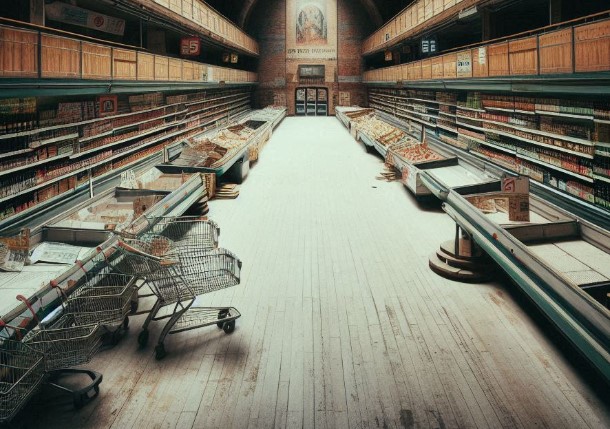Life in rural Spain, often referred to as “Empty Spain,” is far from an idyllic picture of village romance. It’s a daily struggle marked by the scarcity of basic services and social opportunities. One of the most pressing challenges is the lack of access to grocery stores. For thousands of Spaniards, weekly shopping becomes a veritable odyssey.
According to recent reports, 4,632 out of Spain’s 8,132 municipalities do not have a single supermarket. This accounts for more than half of the total municipal area. Those living in these places often have to travel long distances to get their essentials. This particularly affects the elderly and those without their own vehicles, whose mobility is severely restricted. The logistical hurdles are enormous, turning even everyday tasks into an exhausting ordeal.
Glimmers of Hope in Distribution: Impressive Coverage Despite Everything
Despite these alarming figures, there’s also positive news: according to the IV Report on Local Food Distribution in Spain, compiled by the Spanish Association of Distributors, Self-Service Companies, and Supermarkets (Asedas) and Retail Data, an impressive 96.8% of the Spanish population lives in municipalities with at least one grocery store.
This high percentage is the result of the ongoing efforts of the distribution sector. Despite difficult conditions and often low population density in rural areas, supermarket chains have managed to maintain remarkable coverage. This demonstrates the industry’s adaptability and commitment to ensuring the population’s supply, even when it presents an economic and logistical challenge.
The Supermarket Boom: Growth Despite Rural Shortages
Paradoxically, Spain is simultaneously experiencing unstoppable growth in the supermarket sector. In 2024, the country recorded a total of 25,585 self-service stores, supermarkets, and hypermarkets. This represents a net increase of 352 establishments compared to the previous year, with a total of 778 new openings.
The supermarket format remains the most successful, followed by self-service stores, which have begun to recover after a decline in the previous year. However, this growth is predictably concentrated in larger cities and urban areas, where customer frequency and profitability are higher.
The gap between urban growth and rural scarcity is thus widening. While cities enjoy an ever-denser supply, people in Empty Spain continue to struggle with the fundamental challenges of daily life. It remains a key task for politics and the economy to find solutions that not only promote economic growth but also improve the quality of life in Spain’s neglected regions.




